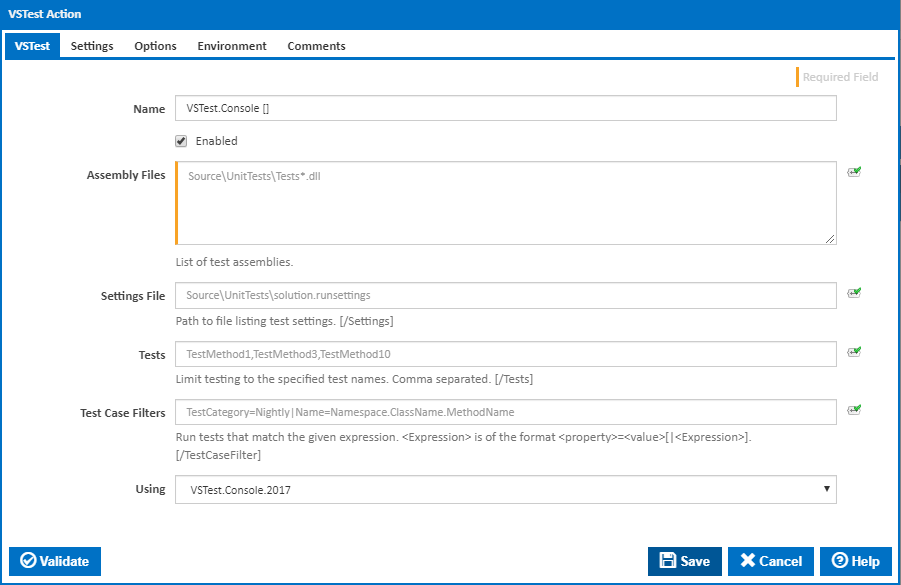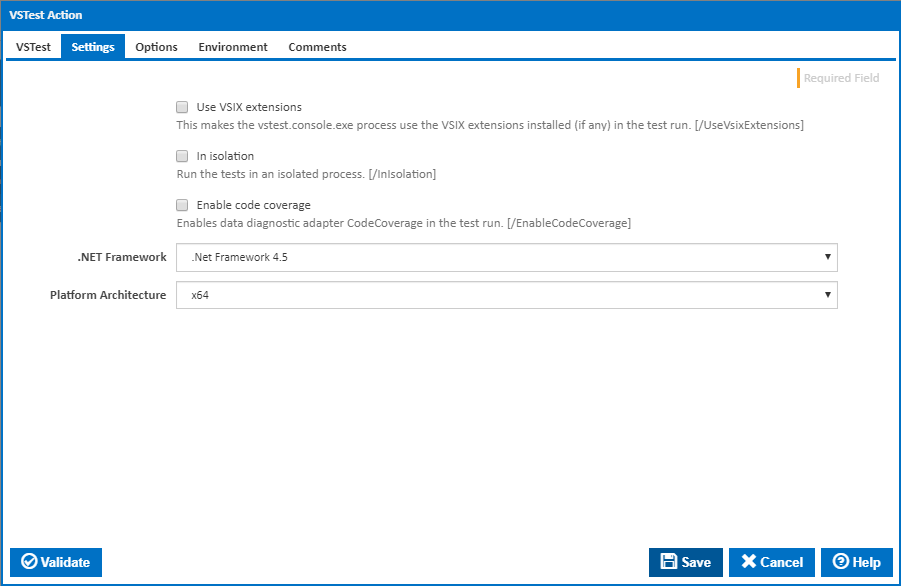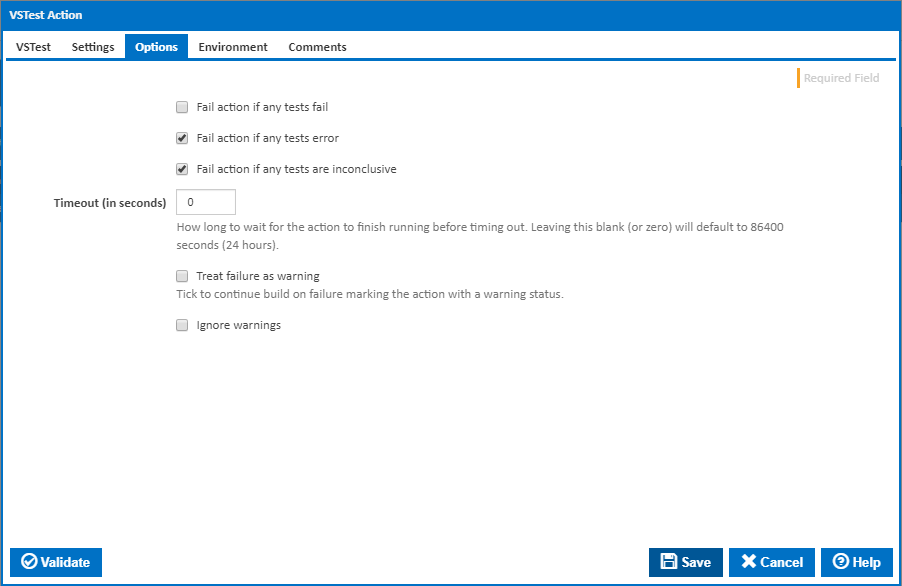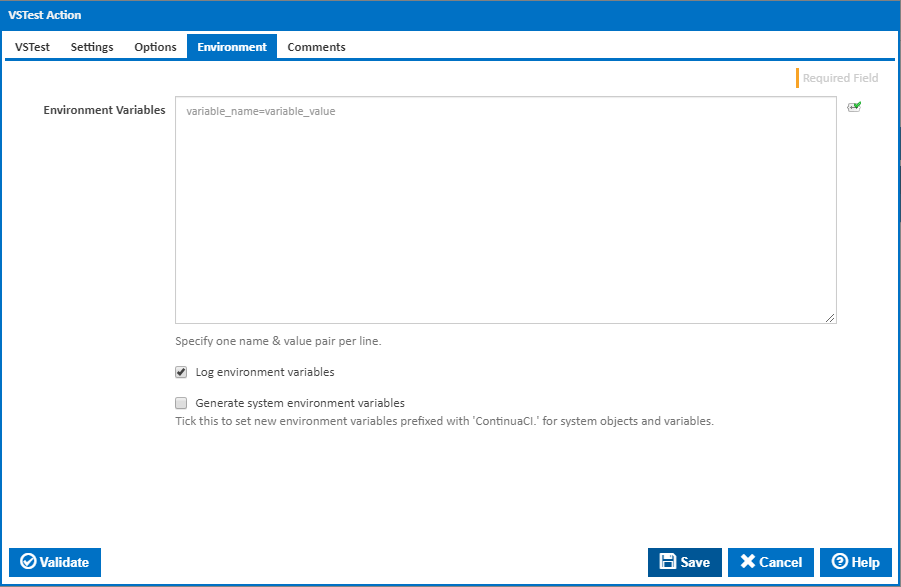The VSTest action in Continua is a wrapper around the VSTest.Console.exe command line. If you're having trouble using the VSTest action, please refer to the Command Line Reference.
The VSTest action can be used to run automated unit and coded UI tests. VSTest.Console.exe is optimized for performance and is used in place of MSTest.exe as of Visual Studio 2012.
VSTest
Name
A friendly name for this action (will be displayed in the actions workflow area).
Enabled
Determines if this action will be run within the relevant stage.
Assembly Files
Specify the paths to the assemblies to test - one per line. You can use Ant patterns to match multiple files.
Settings File
The path to an optional run settings file. [/Settings]
Tests
An optional list of test names separated with commas. [/Tests]
Test Case Filters
An optional list of test case filter. [/TestCaseFilter]
Expressions are in the format <property>=<value>[|<Expression>].
E.g. TestCategory=Nightly|FullyQualifiedName=Namespace.ClassName.MethodName
Using
The Using drop down is populated with any property collector whose namespace matches the pattern defined by the VSTest action. The pattern for this action is ^VSTest.Console*
If you create a property collector for this action, make sure you select the Path Finder PlugIn type and give it a name that will match the pattern above in blue. Example names listed here, search the table's Plugin column for "VSTest".
For more in-depth explanations on property collectors see Property Collectors.
Alternatively, you can select the Custom option from the Using drop down list and specify a path in the resulting input field that will be displayed. Please read Why it's a good idea to use a property collector before using this option.
Settings
Use VSIX extensions
This makes vstest.console.exe process use or skip the VSIX extensions installed (if any) in the test run. [/UseVsixExtensions]
In isolation
Runs the tests in an isolated process. This makes vstest.console.exe process less likely to be stopped on an error in the tests, but tests might run slower. [/InIsolation]
Enable code coverage
Enables data diagnostic adapter CodeCoverage in the test run. Default settings are used if not specified using settings file. [/EnableCodeCoverage]
.Net Framework
The target .NET Framework version to be used for test execution. [/Framework:]
Platform Architecture
The target platform architecture to be used for test execution. [/Platform:]
Options
Fail action if any tests fail
Tick this to cause the build to fail if any tests fail.
Fail action if any tests error
Tick this to cause the build to fail if an error occurred while running any test.
Fail action if any tests are inconclusive
Tick this to cause the build to fail if any tests are inconclusive.
Timeout (in seconds)
How long to wait for the action to finish running before timing out. Leaving this blank (or zero) will default to 86400 seconds (24 hours).
Treat failure as warning
Tick to continue build on failure marking the action with a warning status.
Ignore warnings
If this is ticked, any warnings logged will not mark the action with a warning status.
Environment
Environment Variables
Multiple environment variables can be defined - one per line. These are set before the command line is run.
Log environment variables
If this is ticked, environment variable values are written to the build log.
Generate system environment variables
Tick this checkbox to set up a list of new environment variables prefixed with 'ContinuaCI.' for all current system expression objects and variables.
Mask sensitive variable values in system environment variables
This checkbox is visible only if the 'Generate system environment variables' checkbox is ticked.
If this is ticked, the values of any variables marked as sensitive will be masked with **** when setting system environment variables. Clear this to expose the values.



